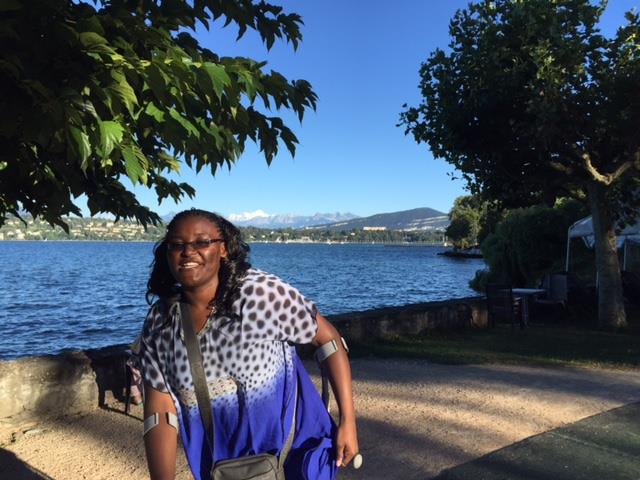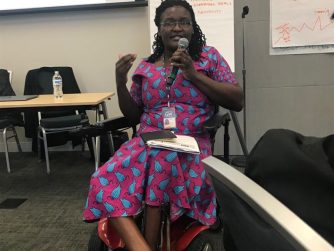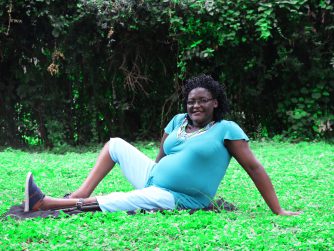International Women’s day dates back to 1909 when the first National Women’s Day was observed in the United States on February 28. The Socialist Party of America celebrated this day in honor of the garment workers’ strike in 1908 in New York where women picketed and marched, demanding improved working conditions and equal rights.In March 19, 1911, International Women’s Day was observed for the first time in Germany, Austria, Denmark and Switzerland where over 1 million men and women participated in rallies in demand for right to vote, to hold public office, women’s right to work, to vocational training and to end discrimination on job.
In 1917 Russian women protested and called a strike for “Bread and Peace” on the last Sunday in February, which fell on 8 March according to Gregorian calendar. Four days prior to that, the Czar of Russia resigned and the interim government granted the right to vote to women.During late 1975 the United Nations started observing International Women’s Day on March 8 and in 1977, The General Assembly passed a resolution to observe United Nations Day for Women’s Rights in accordance with the member states’ national and historical traditions.
The theme for this year International Women’s day is #PressforProgress with focus on enhancing gender parity. The global gender gap report published by World Economic Forum in 2017 reveals that the average remaining distance to gender parity is now 32%, up from 31.7% in 2006. The report measures the equality between men and women in four key areas: health, education, economics and politics.

According to the 2015 Millennium Development Goals report, Sub-Saharan Africa achieved the best record of improvement in primary education of any region since the establishment of the MDGs. Between 1990 and 2012, the absolute enrollment in the region more than doubled, from 62 million children to 149 million. However, girls continue to face barriers to schooling in the region. While there has been a closing of the gender gap through a substantive increase in girl’s school enrollment at primary level, the region has 57 percent (33 million) of the world’s out-of-school children population, of which 55 percent are girls. In addition, girls’ school enrollment at the secondary and tertiary levels is the lowest among all regions of the world, with the gender gap at the tertiary level widening between 2000 and 2015.The report further reveals that Sub-Saharan Africa registered the most impressive progress in women’s access to paid employment in the non-agricultural sector, increasing from 24 percent to 34 percent from 1990 to 2015. The 2015 MDG report also found that women in the region are gaining more power in politics. The proportion of seats held by women in single or lower houses of national parliament increased from 13 percent in 2000 to 23 percent in 2015, which is not far behind the developed regions (25 percent).
So, where is the place for Women with disabilities in Women Empowerment Discourse?
Ten per cent of the world’s population live with disabilities, and frequently encounter a myriad of physical and social obstacles. They often lack the opportunities of the mainstream population and are usually among the most marginalized in society. Often, women with disabilities are invisible both among those promoting the rights of persons with disabilities, and those promoting gender equality and the advancement of women.
Participation of Women with Disabilities in Mainstream Development:
The global literacy rate for adults with disabilities is as low as 3 per cent and 1 per cent for women with disabilities, according to a 1998 UNDP study. According to International Labour Organization(ILO) working paper number 14 ,People with disabilities in general face difficulties in entering the open labour market, but, seen from a gender perspective, men with disabilities are almost twice more likely to have jobs than women with disabilities. According to World Bank Every minute, more than 30 women are seriously injured or disabled during labor… However, those 15 – 50 million women generally go unnoticed.
Women with disabilities, of all ages, often have difficulty with physical access to health services. Women with mental disabilities are particularly vulnerable, while there is limited understanding, in general, of the broad range of risks to mental health to which women are disproportionately susceptible as a result of gender discrimination, violence, poverty, armed conflict, dislocation and other forms of social deprivation (Committee on the Elimination of Discrimination against Women General Recommendation 24 ).
To facilitate inclusive empowerment of women there is need to develop effective strategies that enhance inclusion of women from diverse groups who are often marginalized including women with disabilities. In the spirit of Sustainable Development Goals (SDGs) development is only sustainable if it is inclusive hence the pledge to “leave no one behind”.







I like this web site it’s a master piece! Glad I noticed
this ohttps://69v.topn google.Raise range
Muchas gracias. ?Como puedo iniciar sesion?
Thank you for your sharing. I am worried that I lack creative ideas. It is your article that makes me full of hope. Thank you. But, I have a question, can you help me?
I don’t think the title of your article matches the content lol. Just kidding, mainly because I had some doubts after reading the article.
Your point of view caught my eye and was very interesting. Thanks. I have a question for you.
Can you be more specific about the content of your article? After reading it, I still have some doubts. Hope you can help me. https://www.binance.com/fr-AF/register?ref=JHQQKNKN
I don’t think the title of your article matches the content lol. Just kidding, mainly because I had some doubts after reading the article.
Your point of view caught my eye and was very interesting. Thanks. I have a question for you.
Thank you for your sharing. I am worried that I lack creative ideas. It is your article that makes me full of hope. Thank you. But, I have a question, can you help me?
Your article helped me a lot, is there any more related content? Thanks!
Can you be more specific about the content of your article? After reading it, I still have some doubts. Hope you can help me.
Can you be more specific about the content of your article? After reading it, I still have some doubts. Hope you can help me.
I don’t think the title of your article matches the content lol. Just kidding, mainly because I had some doubts after reading the article.
Can you be more specific about the content of your article? After reading it, I still have some doubts. Hope you can help me.
I don’t think the title of your article matches the content lol. Just kidding, mainly because I had some doubts after reading the article.
Your point of view caught my eye and was very interesting. Thanks. I have a question for you.
Thank you for your sharing. I am worried that I lack creative ideas. It is your article that makes me full of hope. Thank you. But, I have a question, can you help me?
Your point of view caught my eye and was very interesting. Thanks. I have a question for you.
Thank you for your sharing. I am worried that I lack creative ideas. It is your article that makes me full of hope. Thank you. But, I have a question, can you help me?
Can you be more specific about the content of your article? After reading it, I still have some doubts. Hope you can help me.
Can you be more specific about the content of your article? After reading it, I still have some doubts. Hope you can help me.
Your point of view caught my eye and was very interesting. Thanks. I have a question for you.
Thank you for your sharing. I am worried that I lack creative ideas. It is your article that makes me full of hope. Thank you. But, I have a question, can you help me?
Professional moving day clean, made the transition so smooth. Using for every future move. Transition heroes.
Thank you for your sharing. I am worried that I lack creative ideas. It is your article that makes me full of hope. Thank you. But, I have a question, can you help me? https://www.binance.info/fr-AF/register-person?ref=JHQQKNKN
Dry Cleaning in New York city by Sparkly Maid NYC
Your point of view caught my eye and was very interesting. Thanks. I have a question for you. https://www.binance.com/es-MX/register?ref=JHQQKNKN
Your point of view caught my eye and was very interesting. Thanks. I have a question for you. https://accounts.binance.info/en/register-person?ref=JHQQKNKN
Thank you for your sharing. I am worried that I lack creative ideas. It is your article that makes me full of hope. Thank you. But, I have a question, can you help me?
Thank you for your sharing. I am worried that I lack creative ideas. It is your article that makes me full of hope. Thank you. But, I have a question, can you help me?
Thanks for sharing. I read many of your blog posts, cool, your blog is very good.
Can you be more specific about the content of your article? After reading it, I still have some doubts. Hope you can help me.
New to PH Slots? phslotsloginregister makes it super easy to sign up and get started! No hassle, just straight to the games! Register now on phslotsloginregister!
Superrush is a great way to unwind! It’s worth a try with so many possibilities to win. This is really a top game. Stop reading and start playing superrush
Gamebet2 is pretty basic, but sometimes that’s what you want. Simple, easy to navigate. Got a few go-to games there now. Give it a try if you are after something straightforward! Link here: gamebet2